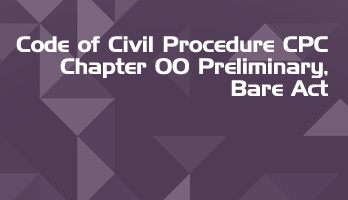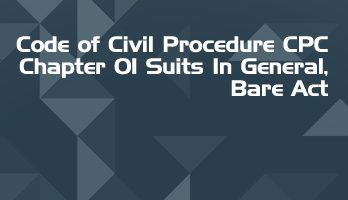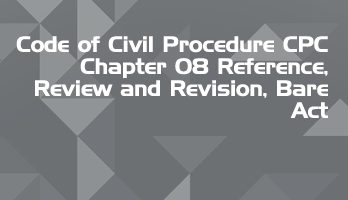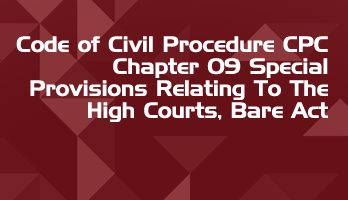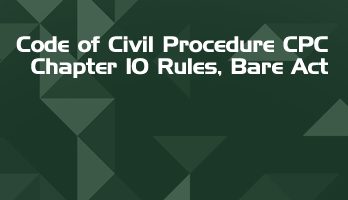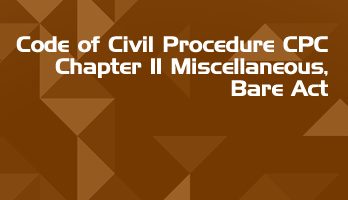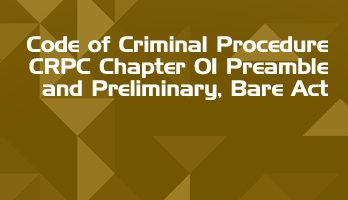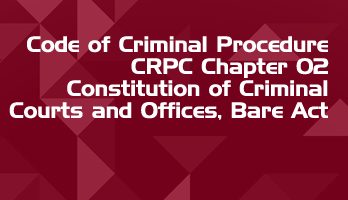A 'Bare act' is the actual legislation passed by the Parliament of India. Generally, an act sets out the high level legal and policy principles applicable to the subject matter of the law.
Most acts are accompanied by 'subsidiary legislation' such as rules, regulations, notifications and orders; which address the actual implementation detail of the act.
Free Full Course Available on LawMint's YouTube Channel
How to Land Your Dream LLB Internship in a Top Law Firm
- Part 1 - Introduction
- Part 2 - Internship Planning
- Part 3 - Internship Research
- Part 4 - Building Your Profile
- Part 5 - The Email
- Part 6 - The Resume
- Part 7 - The Cover Letter
- Part 8 - The Interview
- Part 9 - Self Development
Practical and comprehensive course, with real examples and step-by-step analysis of the complete internship application process. Check out LawMint's YouTube channel now!
The Motor Vehicles Act, 1988
Preamble
An Act to consolidate and amend the law relating to motor vehicles. Be it enacted by Parliament in the Thirty – ninth Year of the Republic of India as follows –
Chapter I – Preliminary
Section 1 – Short title, extent and commencement
- This Act may be called the Motor Vehicles Act, 1988.
- It extends to the whole of India.
- It shall come into force on such date as the Central Government may, by notification in the Official Gazette, appoint; and different dates may be appointed for different States and any reference in this Act to the commencement of this Act shall, in relation to a State, be construed as a reference to the coming into force of this Act in that State.
Section 2 – Definitions
In this Act, unless the context otherwise requires –
- “area”, in relation to any provision of this Act, means such area as the State Government may, having regard to the requirements of that provision, specify by notification in the Official Gazette;
- “articulated vehicle” means a motor vehicle to which a semi – trailer is attached;
- “axle weight” means in relation to an axle of a vehicle the total weight transmitted by the several wheels attached to that axle to the surface on which the vehicle rests;
- “certificate of registration” means the certificate issued by a competent authority to the effect that a motor vehicle has been duly registered in accordance with the provisions of Chapter IV;
- “conductor” in relation to a stage carriage, means a person engaged in collecting fares from passengers, regulating their entrance into, or exit from, the stage carriage and performing such other functions as may be prescribed;
- “conductor’s license” means the license issued by a competent authority under Chapter III authorising the person specified therein to act as a conductor;
- “contract carriage” means a motor vehicle which carries a passenger or passengers for hire or reward and is engaged under a contract, whether expressed or implied, for the use of such vehicle as a whole for the carriage of passengers mentioned therein and entered into by a person with a holder of a permit in relation to such vehicle or any person authorised by him in this behalf on a fixed or an agreed rate or sum –
- on a time basis, whether or not with reference to any route or distance; or
- from one point to another, and in either case, without stopping to pick up or set down passengers not included in the contract anywhere during the journey, and includes –
- a maxi cab; and
- a motor cab notwithstanding the separate fares are charged for its passengers;
- “dealer” includes a person who is engaged –
- –
- in building bodies for attachment to chassis; or
- in the repair of motor vehicles; or
- in the business of hypothecation, leasing or hire – purchase of motor vehicle;
- “driver” includes, in relation to a motor vehicle which is drawn by another motor vehicle, the person who acts as a steersman of the drawn vehicle;
- “driving license” means the license issued by a competent authority under Chapter II authorising the person specified therein to drive, otherwise than as a learner, a motor vehicle or a motor vehicle of any specified class or description;
- “educational institution bus” means an omnibus, which is owned by a college, school or other educational institution and used solely for the purpose of transporting students or staff of the educational institution in connection with any of its activities;
- “fares” includes sums payable for a season ticket or in respect of the hire of a contract carriage;
- “goods” includes livestock, and anything (other than equipment ordinarily used with the vehicle) carried by a vehicle except living persons, but does not include luggage or personal effects carried in a motor car or in a trailer attached to a motor car or the personal luggage of passengers travelling in the vehicle;
- “goods carriage” means any motor vehicle constructed or adapted for use solely for the carriage of goods, or any motor vehicle not so constructed or adapted when used for the carriage of goods;
- “gross vehicle weight” means in respect of any vehicle the total weight of the vehicle and load certified and registered by the registering authority as permissible for that vehicle;
- “heavy goods vehicle” means any goods carriage the gross vehicle weight of which, or a tractor or a road – roller the unladen weight of either of which, exceeds 12,000 kilograms;
- “heavy passenger motor vehicle” means any public service vehicle or private service vehicle or educational institution bus or omnibus the gross vehicle weight of any of which, or a motor car the unladen weight of which, exceeds 12,000 kilograms;
- “invalid carriage” means a motor vehicle specially designed and constructed, and not merely adapted, for the use of a person suffering from some physical defect or disability, and used solely by or for such a person;
- “learner’s license” means the license issued by a competent authority under Chapter II authorising the person specified therein to drive as a learner, a motor vehicle or a motor vehicle of any specified class or description;
- “licensing authority” means an authority empowered to issue licenses under Chapter II or, as the case may be, Chapter III;
- “light motor vehicle” means a transport vehicle or omnibus the gross vehicle weight of either of which or a motor car or tractor or road – roller the unladen weight of any of which, does not exceed 7,500 kilograms; (21A) “manufacturer” means a person who is engaged in the manufacture of motor vehicles;
- “maxi cab” means any motor vehicle constructed or adapted to carry more than six passengers, but not more than twelve passengers, excluding the driver, for hire or reward;
- “medium goods vehicle” means any goods carriage other than a light motor vehicle or a heavy goods vehicle;
- “medium passenger motor vehicle” means any public service vehicle or private service vehicle, or educational institution bus other than a motor cycle, invalid carriage, light motor vehicle or heavy passenger motor vehicle;
- “motor cab” means any motor vehicle constructed or adapted to carry not more than six passengers excluding the driver for hire or reward;
- “motor car” means any motor vehicle other than a transport vehicle, omnibus, road – roller, tractor, motor cycle or invalid carriage;
- “motor cycle” means a two – wheeled motor vehicle, inclusive of any detachable side – car having an extra wheel, attached to the motor vehicle;
- “motor vehicle” or “vehicle” means any mechanically propelled vehicle adapted for use upon roads whether the power of propulsion is transmitted thereto from an external or internal source and includes a chassis to which a body has not been attached and a trailer; but does not include a vehicle running upon fixed rails or a vehicle of a special type adapted for use only in a factory or in any other enclosed premises or a vehicle having less than four wheels fitted with engine capacity of not exceeding twenty – five cubic centimetres;
- “omnibus” means any motor vehicle constructed or adapted to carry more than six persons excluding the driver;
- “owner” means a person in whose name a motor vehicle stands registered, and where such person is a minor, the guardian of such minor, and in relation to a motor vehicle which is the subject of a hire – purchase, agreement*, or an agreement of lease or an agreement of hypothecation, the person in possession of the vehicle under that agreement;
- “permit” means a permit issued by a State or Regional Transport Authority or an authority prescribed in this behalf under this Act authorising the use of a motor vehicle as a transport vehicle;
- “prescribed” means prescribed by rules made under this Act;
- “private service vehicle” means a motor vehicle constructed or adapted to carry more than six persons excluding the driver and ordinarily used by or on behalf of the owner of such vehicle for the purpose of carrying persons for, or in connection with, his trade or business otherwise than for hire or reward but does not include a motor vehicle used for public purposes;
- “public place” means a road, street, way or other place, whether a thoroughfare or not, to which the public have a right of access, and includes any place or stand at which passengers are picked up or set down by a stage carriage;
- “public service vehicle” means any motor vehicle used or adapted to be used for the carriage of passengers for hire or reward, and includes a maxi cab, a motor cab, contract carriage, and stage carriage;
- “registered axle weight” means in respect of the axle of any vehicle, the axle weight certified and registered by the registering authority as permissible for that axle;
- “registering authority” means an authority empowered to register motor vehicles under Chapter IV;
- “route” means a line of travel which specifies the highway which may be traversed by a motor vehicle between one terminus and another;
- “semi – trailer” means a vehicle not mechanically propelled (other than a trailer), which is intended to be connected to a motor vehicle and which is so constructed that a portion of it is super – imposed on, and a part of whose weight is borne by, that motor vehicle;
- “stage carriage” means a motor vehicle constructed or adapted to carry more than six passengers excluding the driver for hire or reward at separate fares paid by or for individual passengers, either for the whole journey or for stages of the journey;
- “State Government” in relation to a Union territory means the Administrator thereof appointed under article 239 of the Constitution;
- “State transport undertaking” means any undertaking providing road transport service, where such undertaking is carried on by –
- the Central Government or a State Government;
- any Road Transport Corporation established under section 3 of the Road Transport Corporations Act, 1950 (64 of 1950);
- any municipality or any corporation or company owned or controlled by the Central Government or one or more State Governments, or by the Central Government and one or more State Governments.
- Zila Parishad or any other similar local authority. Explanation For the purposes of this clause, “road transport service” means a service of motor vehicles carrying passengers or goods or both by road for hire or reward;
- “tourist vehicle” means a contract carriage, constructed or adapted and equipped and maintained in accordance with such specifications as may be prescribed in this behalf;
- “tractor” means a motor vehicle which is not itself constructed to carry any load (other than equipment used for the purpose of propulsion); but excludes a road – roller;
- “traffic signs” includes all signals, warning sign posts, direction posts, markings on the road or other devices for the information, guidance or direction of drivers of motor vehicles;
- “trailer” means any vehicle, other than a semi – trailer and a side – car, drawn or intended to be drawn by a motor vehicle;
- “transport vehicle” means a public service vehicle, a goods carriage, an educational institution bus or a private service vehicle;
- “unladen weight” means the weight of a vehicle or trailer including all equipment ordinarily used with the vehicle or trailer when working, but excluding the weight of a driver or attendant; and where alternative parts or bodies are used the unladen weight of the vehicle means the weight of the vehicle with the heaviest such alternative part or body;
- “weight” means the total weight transmitted for the time being by the wheels of a vehicle to the surface on which the vehicle rests.
Important Central Acts in Regional Languages
Legislative department website also features regional language versions of several important Central Acts.
Free Full Course Available on LawMint's YouTube Channel
How to Land Your Dream LLB Internship in a Top Law Firm
- Part 1 - Introduction
- Part 2 - Internship Planning
- Part 3 - Internship Research
- Part 4 - Building Your Profile
- Part 5 - The Email
- Part 6 - The Resume
- Part 7 - The Cover Letter
- Part 8 - The Interview
- Part 9 - Self Development
Practical and comprehensive course, with real examples and step-by-step analysis of the complete internship application process. Check out LawMint's YouTube channel now!



